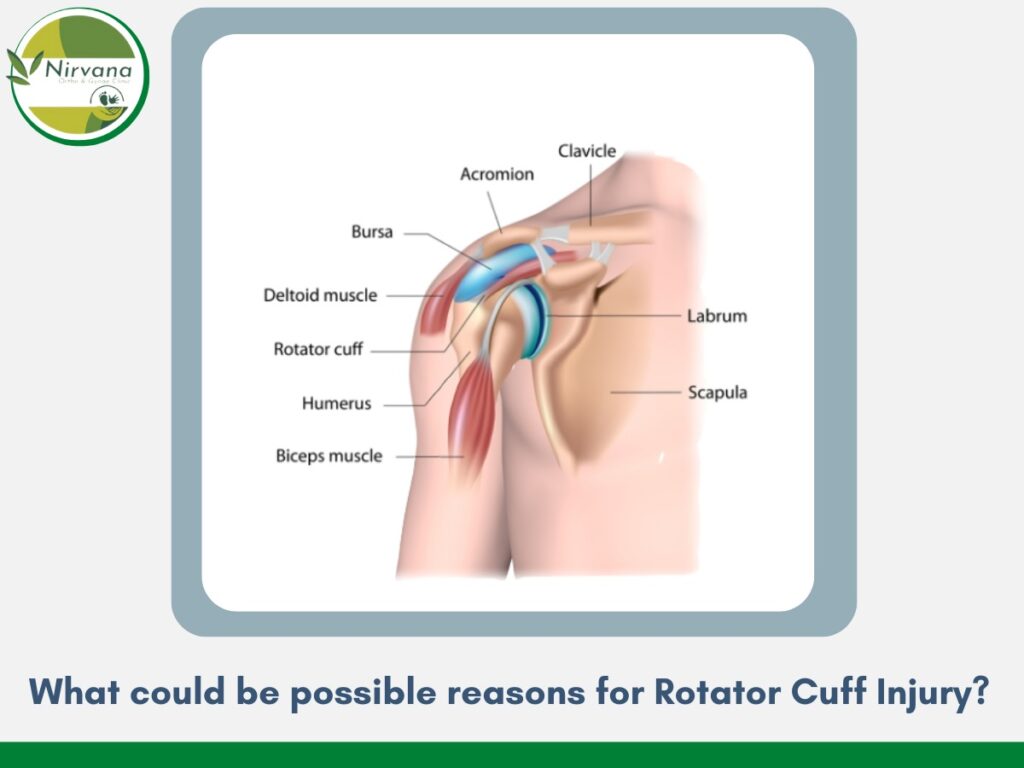The upper arm bone’s head is kept securely inside the small socket of the shoulder by a combination of muscles and tendons known as the rotator cuff.
According to the Best orthopedic doctor in Noida, Dr. Shobhit Bhardwaj the frequency of rotator cuff injuries rises with age. People with occupations that frequently need overhead motions, such as painters and carpenters, may have these ailments early.
The muscles that surround the shoulder joint can become more flexible and strong with physical therapy exercises.
For many people with rotator cuff problems, these exercises are sufficient to control their symptoms. Rotator cuff tears can occasionally result from a single injury. People should seek medical advice in certain situations as soon as possible since surgery could be necessary.
Rotator cuff Injury
The skeletal system includes a ball-and-socket joint called the shoulder. It resembles a golf ball that is perched on a tee. Tendons pulling away from the arm bone is what leads to rotator cuff tears. An injury such as overuse or another one may cause a tear.
What kinds of rotator cuff tears are there?
Various rotator cuff injuries include:
Partial: The tendon is still partially attached to the arm bone in cases of incomplete or partial tears.
Total: The tendon entirely separates from the bone when there is a full thickness or complete rip. The tendon has a tear or hole in it.
Rotator cuff tears: how frequent are they?
Every year, more than two million Americans deal with rotator cuff issues of some kind.
All ages and genders are susceptible to rotator cuff tears, however, adults are more frequently affected than children.
What results in the rotator cuff being torn?
Accidents can result in a dislocated shoulder that rips the rotator cuff or a shattered collarbone.
More frequently, rotator cuff injuries develop gradually as the tendon deteriorates with time and use (degenerative tear).
Degenerative tears can be brought on by:
Bone spurs: On the top of the shoulder bone, bony growths can develop. When you elevate your arm, these bone spurs chafe the tendon. Friction is caused between the tendon and bone as a result of shoulder impingement. Eventually, there may be a partial or whole tear.
Reduced blood flow: As you age, your rotator cuff’s blood flow declines. To recover, your muscles and tendons require a strong blood flow. The tendons can rip if there isn’t enough blood to support them.
Overuse: Repeated shoulder motions while playing a sport or working can strain muscles and tendons, leading to a rupture.
What raises the possibility of rotator cuff tears?
Anybody can develop a torn rotator cuff. These elements might raise your risk:
- Family history of rotator cuff issues or shoulder conditions.
- Bad posture
- Smoking.
- 40 years of age or more.
The prevalence of degenerative rips is higher in those who do the same repeated shoulder motions, such as:
- Carpenters.
- Mechanics.
- Painters.
- Athletes who participate in a rowing crew or who play baseball, softball, or tennis for fun or as a vocation.
What signs and symptoms point to a torn rotator cuff?
Accidental sudden tears result in instant, severe shoulder discomfort and arm paralysis. You could experience modest pain from degenerative tears, which becomes better with over-the-counter analgesics. Painkillers do not assist since the discomfort worsens with time. While not everyone has discomfort, the majority of people experience some arm and shoulder weakness.
If you want to know more or seeking the Best Consultant Orthopaedic Surgeon, Contact us Now.

